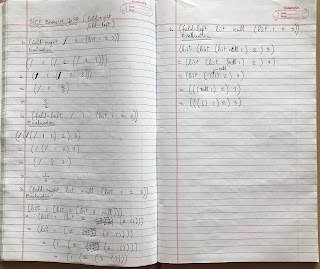SICP Exercise 2.39 reverse as fold
Exercise 2.39. Complete the following definitions of reverse (exercise 2.18 ) in terms of fold-right and fold-left from exercise 2.38 : (define (reverse sequence) (fold-right (lambda (x y) < ?? >) nil sequence)) (define (reverse sequence) (fold-left (lambda (x y) < ?? >) nil sequence)) SOLUTION The code and tests are here .
